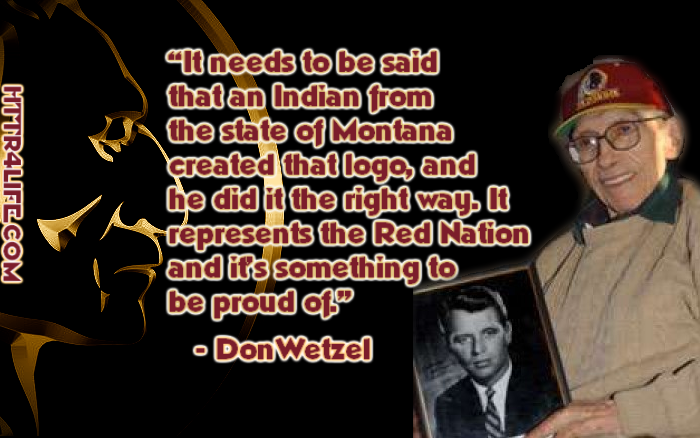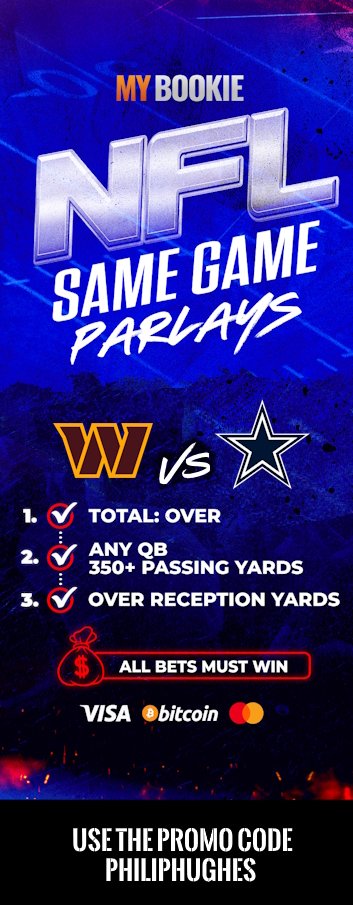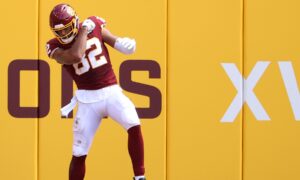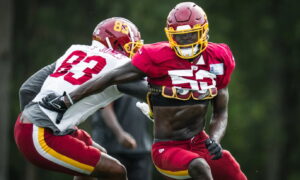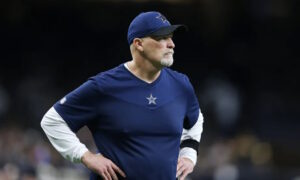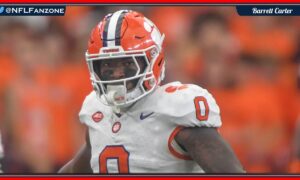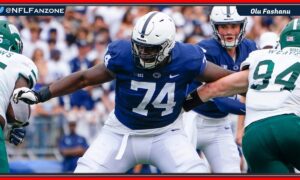Today we have a guest writer, Quinn Jordan, who recently wrote the following from the perspective of the truth he found through countless hours of research from BOTH sides of the topic. The ‘Manufactured Fight Over Honor and Racism’ is the story of a war of misinformation waged against the fans of the team, as well as the outside public and the team itself.
Manufactured Fight
It was a cold, wintry Sunday afternoon in December of 1983. I was eight years old and stuck inside with not much to do. Hanging out in my room alone, which I often did when I couldn’t go outside to play. Watching my old black and white television set that only had our local channels.
I wasn’t the biggest football fan at the time because I was more into my Star Wars toys, but on channel three that day there was a football game on. As I watched this football game, I became very intrigued. One of the teams had a boring helmet that just read ‘Giants’ on the side. The other team, however, had a really cool-looking helmet with an Indian head logo. They were playing on a “painted dirt field” something called ‘The Hogs,’ a guy named ‘The Diesel’ and an awesome fight song. Their nickname sounded really cool too, the ‘Redskins.’ I thought the Redskins were the coolest thing ever! I had no clue what kind of controversy the Redskins nickname bore. To me, it was just the name of a football team, and ‘Redskin’ meant Indian. Fast forward 30 years and the innocence of ‘Redskins’ has all but faded.
As I sat down to write this, news broke about the Redskins having their trademark canceled. Darren Rovell of ESPN reported:
“The United States Patent and Trademark Office has canceled the team’s trademark on the basis that it is “disparaging to Native Americans.”
Native American activist groups have been in a legal battle with the Redskins for more than two decades, trying to get the ‘Skins trademark revoked. In doing so, the Native American activists are trying to force the Redskins to change their name because they believe it to be a racial epithet. The Washington Redskins are under heavy pressure from, not just Indian activists but also members of the United States Congress. In May, fifty United States Senators signed a letter addressed to Redskins owner Dan Snyder urging him to change the name. Erick Brady of the USA Today, cited a quote from the letter, stating;
“The NFL can no longer ignore this and perpetuate the use of this name as anything but what it is: a racial slur.”
Pressure is mounting from the media, government officials, and a few Indian activists to force the Washington Redskins to change their name. However, the team should not have to change their name, based on the fact that it’s debatable to say ‘Redskin’ is a racial slur. Not to mention the fact that the Washington Redskins have been honoring the Native Americans since their inception into the National Football League.
Is ‘Redskin’ a racial slur? That is a topic of debate that even highly accomplished scholars can’t even answer. J. Gordon Hylton, a Professor of Law at Marquette University, says that
“If you were to look up the word ‘Redskin’ in “widely used English language dictionaries” prior to 1983 you would find that ‘redskin’ was simply a noun for an American or North American Indian. The 1983 edition of “Webster’s Third International Dictionary and Collegiate Dictionary, 9th Edition” were the first dictionaries to add the phrase “usually taken to be offensive” in addition to the definition of ‘Redskin’. So ‘Redskin’ was not defined in our dictionaries as a racial slur prior to 1983.”
‘Redskin’ as a racial slur gained a lot of momentum in 1992. The “bloody scalp” theory gained national recognition thanks to Indian activist Susan Shown Harjo. Adrian Jawort, a member of the Northern Cheyenne Tribe and a writer for Indian Country Today, said this in an article:
I can’t help but notice one glaring statement that’s always inserted into the debates: “redskins” equals “scalp.” This conclusion originates from American Indian activist Suzan Shown Harjo (Cheyenne and Muscogee) and a National Congress of American Indians’ brief. In the Pro Football vs. Harjo trademark case in a bid to force the Washington Redskins to change their name, Harjo and six others made it to the U.S. Court of Appeals for D.C. before the Supreme Court eventually rejected their longstanding case in the 2009. And while that fight still goes on via Blackhorse v. Pro-Football Inc., Harjo’s team had previously claimed “redskin” derived from referring to bloody Indian scalps during the onset of the French and Indian War.
Particularly cited is England’s 1755 Phips Proclamation, a declaration of war against the non-British allied Penobscot Nation stating: “…For every Scalp of such Female Indian or Male Indian under the Age of twelve years that Shall be killed and brought in as Evidence of their being killed as aforesaid, Twenty pounds.”
As appalling and emotionally appealing as it is, the Phips Proclamation doesn’t include the words “red skins” in it. Claiming “scalps” automatically means “red skins” is revisionist history, to be blunt.
It was the Native Americans who first used the term “red” in order to differentiate between indigenous, white, and black people. When not referring to their individual and other tribes collectively, why would they use Indian, Native, or other adjectives to describe their obvious skin differences back then?
Ives Goddard is a senior linguist at the Smithsonian Institution’s National Museum of History. Goddard wrote the book, I am a Redskin: The Adoption of a Native American Expression (1769-1826) and notes the earliest uses of “red skin” were in recorded statements from Natives by the French who generally traded amicably with them. The French were careful to denote the “red” distinction was made by Natives themselves. By the time of the Phips Proclamation, according to Goddard, “red” to describe Natives was used “by both French and English…. Although Europeans sometimes used such expressions among themselves, however, they remained aware of the fact that this was originally and particularly a Native American usage.”
Also citing Goddard in the recent article, “Before The Redskins Were The Redskins: The Use Of Native American Team Names In The Formative Era of American Sports, 1857-1944,” Professor of Law and historian J. Gordon Hylton writes about the term, “…throughout the nineteenth century, the term was essentially neutral when used by whites, reflecting neither a particularly positive or particularly negative connotation.”
Even Sitting Bull once remarked, “I am a red man. If the Great Spirit had desired me to be a white man he would have made me so in the first place.”
The ‘redskin’ is a racial slur because it means “bloody scalp” definition given by Harjo, is sensationalism and revisionist history. Creating a meaning of grotesque negativity where one didn’t exist, was a way for an activist to fit her political agenda and try to win sympathy from the American public that just didn’t know any better. How many Americans are bothered by the Redskins name because they were told, by a Native American, that ‘Redskin’ means “bloody scalp” and that is what the Washington football team is named after?
In a personal interview with Goddard, he stated:
“‘Redskin’ “was an authentic word for Indian”, and that “this is a political debate and in the rules of [a] political debate you don’t need evidence. It [‘redskin’ meaning bloody scalp] is based on an allegation of fact which has never been supported by the usual ways [historians] support the allegation of fact.”
The ‘bloody scalp’ theory is the main theory behind ‘redskin’ being offensive. However, no evidence has been found to back such claims. A large portion of people have had their opinions formed based on information that is misleading.
Although ‘Redskin’ has a pretty innocent beginning, it is not clear when the word developed a negative connotation. Hylton writes in his article, “Why Is the Word Redskin so Offensive?” that there are examples like “Earl Emmons’ 1915 Redskin Rimes” and Hollywood Westerns that used ‘redskin’ negatively. He also states that many examples can be found of ‘Indian’ being used “while making derogatory comments” namely “Gen. Phillip Sheridan’s much-repeated observation that The only good Indian is a dead Indian”. By 1969 ‘redskin’ was defined with a “qualification” as being “informal,” which, according to Hylton, “may be a recognition that ‘redskin’ was passing out of everyday usage.” As noted earlier it wasn’t until 1983 that dictionaries qualified ‘redskin’ with any acknowledgment of it being offensive. There just aren’t many facts to support this.
The claim that ‘redskin’ is a racial slur. Furthermore, the fact that there is not much evidence to pinpoint exactly when the word became a negative connotation is proof enough that the “redskin is a slur” argument is HIGHLY debatable.
Chief Robert “, Two Eagles” Green of the Patawomeck tribe, said ” in an interview with Chris Lingebach of CBSDC.
“I’ve been a Redskins fan for years and to be honest with you, I would be offended if they did change it.”
“Now, our investigation into the term goes back pretty far – to 1608 – when John Smith was traveling from Jamestown to meet with the Indian people, and he remarked in his diary that when they’re born, they’re as white as we are. It’s only as they age that their skin darkens.
“And we believe that that was a reason for that. We use a bug repellent, for lack of a better term, that was made up of animal fat and the dye of the Puccoon plant. And coincidentally, the Puccoon dye, when it’s crushed and dyed, is red. And so for years, the Indian people were rubbing this red dye into their skin. And some of the other early settlers remarked that their skin turns red. So, was that a comment meant to denigrate the Indian people? I don’t think so. I don’t think the name was created by George Preston Marshall to be offensive.”
** CLICK NEXT BELOW TO CONTINUE READING **

